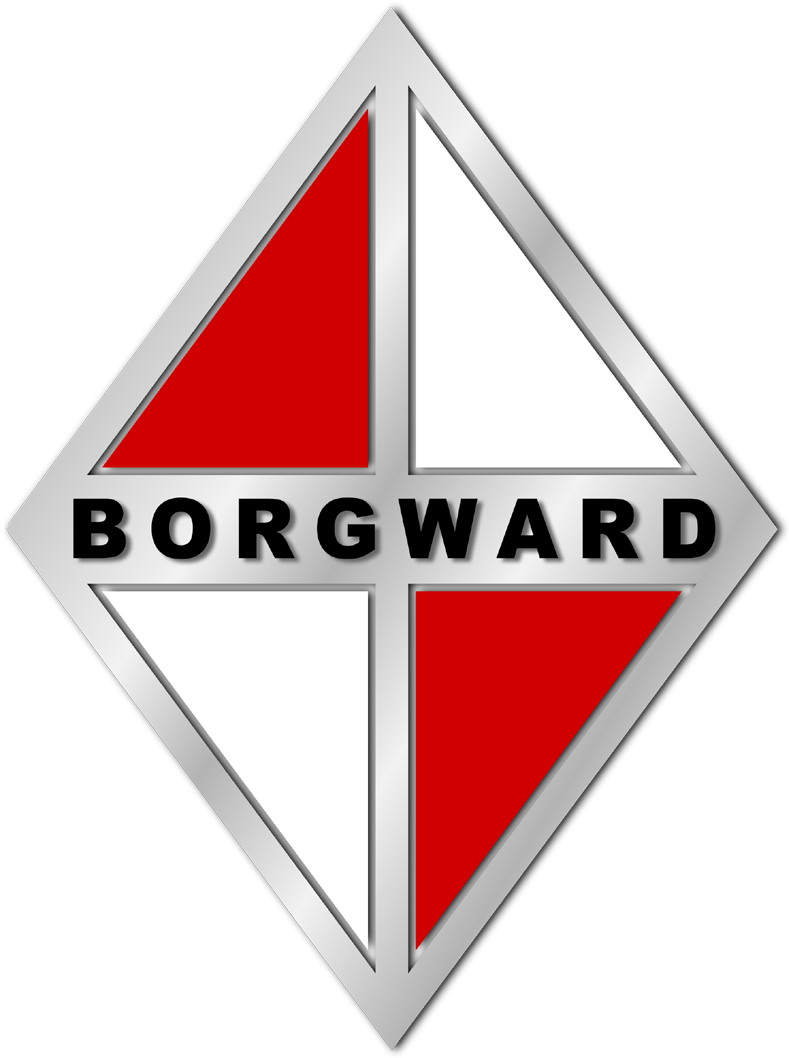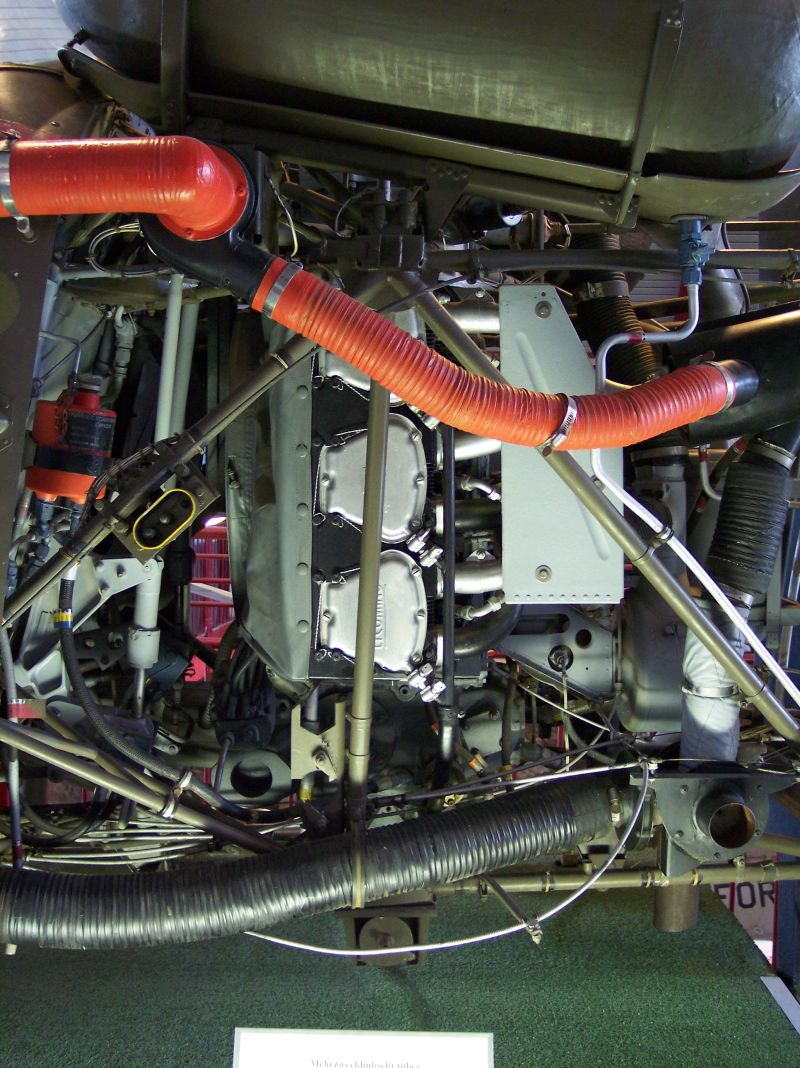|
Borgward Kolibri
The Borgward BFK-1 Kolibri, a.k.a. Borgward-Focke BFK-1 Kolibri, (Kolibri meaning "hummingbird" in German) was a German three-seated utility helicopter built by Borgward, designed by Heinrich Focke and was the first German helicopter after World War II. The helicopter first flew on July 8, 1958, in Bremen, piloted by Ewald Rohlfs Ewald Rohlfs (1911 Bremen, Germany - 1984) was a test pilot. In June 1936 Rohlfs made the first flight of a helicopter, the Focke-Wulf Fw 61 The Focke-Wulf Fw 61 is often considered the first practical, functional helicopter, first flown in .... Design and development Two prototypes were built; they had steel tubing fuselages, covered with metal and fabric and v-tails with tail rotors at their tips. The plywood covered main rotors had three blades with steel tubing spars. The helicopter had a six-cylinder air-cooled Lycoming VO-435-A1B engine, producing 260 hp. The fuel tank was capable of holding 180L. The helicopter could be used for sprayi ... [...More Info...] [...Related Items...] OR: [Wikipedia] [Google] [Baidu] |
Hubschraubermuseum Bückeburg
The Hubschraubermuseum Bückeburg (Bückeburg Helicopter Museum) is located in the German town of Bückeburg, 30 miles (50 km) to the west of Hanover. The museum is the sole museum in Germany specialising in rotary-wing flight and one of few worldwide. The museum is dedicated to the history and technology of the helicopter. History Sergeant Major Werner Noltemeyer gathered parts, models, books and photographs of rotary-wing aircraft while he was training to become a helicopter pilot in the German Army Aviation Corps. In 1959 the German School of Army Aviation was established in Bückeburg. In the late 1960s, the city council of Bückeburg offered Noltemeyer an old timbered-framed building for use as a museum which opened in 1971. Due to a shortage of space an additional exhibition hall was added in 1980. The museum was further expanded with a glass addition in 2011. Hubschrauberzentrum e. V. The ''Hubschrauberzentrum e. V.'' (Helicopter Centre Association) - founded i ... [...More Info...] [...Related Items...] OR: [Wikipedia] [Google] [Baidu] |
Utility Helicopter
A utility helicopter is a multi-purpose helicopter capable of fulfilling many different roles. Civil Many civilian helicopters are made for utility work such as agricultural aircraft. Many police and fire departments maintain and operate utility helicopters to augment their regular forces. In many countries local hospital services operate medevac helicopters for special time-sensitive cases. Military A utility military helicopter can fill roles such as ground attack, air assault, military logistics, CASEVAC, medical evacuation, command and control, and troop transport. Some overlap of terminology is inevitable with transport helicopter. Prominent examples of utility helicopters include the American Bell Huey family, Russian Mil Mi-2 series and the French Aérospatiale Alouette III. See also * Cargo hook (helicopter) * Utility aircraft A utility aircraft is a general-purpose light aircraft, light airplane or helicopter, usually used for transporting people, freight or oth ... [...More Info...] [...Related Items...] OR: [Wikipedia] [Google] [Baidu] |
Germany
Germany,, officially the Federal Republic of Germany, is a country in Central Europe. It is the second most populous country in Europe after Russia, and the most populous member state of the European Union. Germany is situated between the Baltic and North seas to the north, and the Alps to the south; it covers an area of , with a population of almost 84 million within its 16 constituent states. Germany borders Denmark to the north, Poland and the Czech Republic to the east, Austria and Switzerland to the south, and France, Luxembourg, Belgium, and the Netherlands to the west. The nation's capital and most populous city is Berlin and its financial centre is Frankfurt; the largest urban area is the Ruhr. Various Germanic tribes have inhabited the northern parts of modern Germany since classical antiquity. A region named Germania was documented before AD 100. In 962, the Kingdom of Germany formed the bulk of the Holy Roman Empire. During the 16th ce ... [...More Info...] [...Related Items...] OR: [Wikipedia] [Google] [Baidu] |
Borgward
The former Borgward car manufacturing company, based in Bremen, Germany, was founded by Carl F. W. Borgward (1890–1963). It produced cars of four brands, which were sold to a diversified international customer base: Borgward, Hansa, Goliath and Lloyd. Borgward's Isabella was one of the most popular German premium models in the 1950s, while Lloyd's Alexander / Lloyd 600 model offered affordable mobility to many working-class motorists. The group ceased operations in 1961, following controversial insolvency proceedings. The brand was revived in the 21st century, with the Stuttgart-based Borgward Group AG designing and marketing cars manufactured in China. Origins of the component companies The origins of the company go back to 1905 with the establishment in Varel (near Bremen) of Hansa Automobilgesellschaft and the foundation in Bremen itself of NAMAG, maker of the Lloyd car. These two businesses merged in 1914 to form the "Hansa-Lloyd-Werke A.G." After the war, in ... [...More Info...] [...Related Items...] OR: [Wikipedia] [Google] [Baidu] |
Heinrich Focke
Henrich Focke (8 October 1890 – 25 February 1979) was a German aviation pioneer from Bremen and also a co-founder of the Focke-Wulf company. He is best known as the inventor of the Fw 61, the first successful German helicopter. Biography Early life Henrich Focke was born in Bremen on 8 October 1890, Focke studied at Leibniz University Hannover, where he became friends with Georg Wulf in 1911. In 1914, he and Wulf both reported for military service and Focke was deferred due to heart problems, but was eventually drafted into an infantry regiment. After serving on the Eastern front, he was transferred to the Imperial German Army Air Service. Focke graduated in 1920 as Dipl-Ing with distinction. His first job was with the Francke Company of Bremen as a designer of water-gas systems. Focke-Wulf and Focke-Achgelis In 1923, with Wulf and Dr. Werner Naumann, Focke co-founded Focke-Wulf-Flugzeugbau GmbH. In 1927 Wulf died while test flying the Focke-Wulf F 19 canard monopl ... [...More Info...] [...Related Items...] OR: [Wikipedia] [Google] [Baidu] |
Ewald Rohlfs
Ewald Rohlfs (1911 Bremen, Germany - 1984) was a test pilot. In June 1936 Rohlfs made the first flight of a helicopter, the Focke-Wulf Fw 61 The Focke-Wulf Fw 61 is often considered the first practical, functional helicopter, first flown in 1936. It was also known as the Fa 61, as Focke began a new company—Focke-Achgelis—in 1937. Design and development Professor Henrich Fock .... One year later he took the helicopter to an altitude of 1,130 feet (344 m) and then idled the engine. using its spinning rotors to descend safely to the ground. References 1911 births 1984 deaths German test pilots {{Germany-mil-bio-stub ... [...More Info...] [...Related Items...] OR: [Wikipedia] [Google] [Baidu] |
Lycoming VO-435-A1B
The Lycoming O-435 is an American six-cylinder, horizontally opposed fixed-wing aircraft and helicopter engine made by Lycoming Engines. The engine is a six-cylinder version of the four-cylinder Lycoming O-290. Design and development The powerplant is a horizontally opposed Lycoming six-cylinder design. It is a direct-drive or geared, air-cooled, and normally aspirated engine. The cylinders have steel barrels with aluminum heads, and the valves are operated by hydraulic lifters. The crankshaft is supported in an aluminum-alloy split case by four main bearings and one ball-thrust bearing, and lubricating oil is supplied from a 12 quart wet sump. The camshaft rides in journals that do not employ bearing inserts. The accessory housing supports two magnetos, a starter, a generator, and a dual tach drive. A spare mounting pad is included for a vacuum pump. Variants All engines have an additional prefix preceding the ''435'' to indicate the specific configuration of the engine. Ther ... [...More Info...] [...Related Items...] OR: [Wikipedia] [Google] [Baidu] |
1950s German Civil Utility Aircraft
Year 195 ( CXCV) was a common year starting on Wednesday (link will display the full calendar) of the Julian calendar. At the time, it was known as the Year of the Consulship of Scrapula and Clemens (or, less frequently, year 948 ''Ab urbe condita''). The denomination 195 for this year has been used since the early medieval period, when the Anno Domini calendar era became the prevalent method in Europe for naming years. Events By place Roman Empire * Emperor Septimius Severus has the Roman Senate deify the previous emperor Commodus, in an attempt to gain favor with the family of Marcus Aurelius. * King Vologases V and other eastern princes support the claims of Pescennius Niger. The Roman province of Mesopotamia rises in revolt with Parthian support. Severus marches to Mesopotamia to battle the Parthians. * The Roman province of Syria is divided and the role of Antioch is diminished. The Romans annexed the Syrian cities of Edessa and Nisibis. Severus re-establish his head ... [...More Info...] [...Related Items...] OR: [Wikipedia] [Google] [Baidu] |
1950s German Helicopters
Year 195 ( CXCV) was a common year starting on Wednesday (link will display the full calendar) of the Julian calendar. At the time, it was known as the Year of the Consulship of Scrapula and Clemens (or, less frequently, year 948 ''Ab urbe condita''). The denomination 195 for this year has been used since the early medieval period, when the Anno Domini calendar era became the prevalent method in Europe for naming years. Events By place Roman Empire * Emperor Septimius Severus has the Roman Senate deify the previous emperor Commodus, in an attempt to gain favor with the family of Marcus Aurelius. * King Vologases V and other eastern princes support the claims of Pescennius Niger. The Roman province of Mesopotamia rises in revolt with Parthian support. Severus marches to Mesopotamia to battle the Parthians. * The Roman province of Syria is divided and the role of Antioch is diminished. The Romans annexed the Syrian cities of Edessa and Nisibis. Severus re-establish his head ... [...More Info...] [...Related Items...] OR: [Wikipedia] [Google] [Baidu] |

.jpg)

.jpeg)
